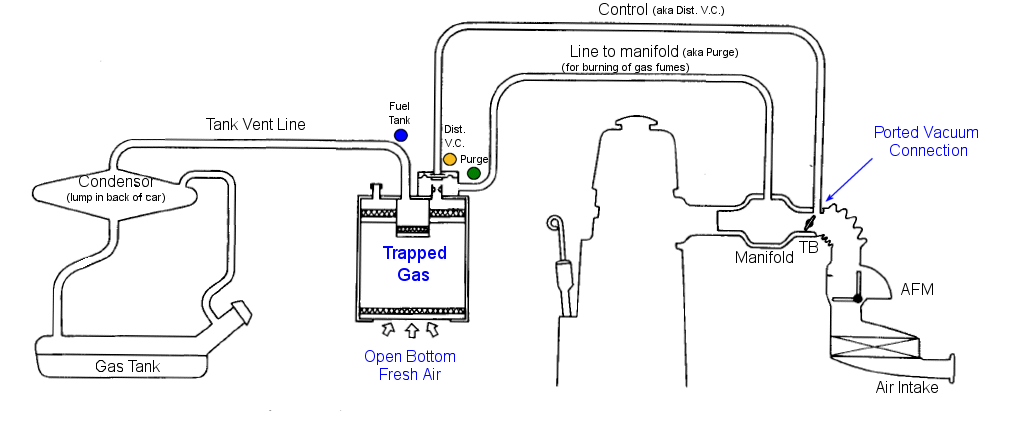Overview:
Gasoline evaporates to a vapor in tank. The
rate depends on temperature.
To minimize pollution, prevent explosions and improve fuel efficiency, this
gas vapor is contained in a special system and then mixed with fresh air and
burned in the combustion chamber.
Key Operational Points:
Vapor condenses in the vapor-liquid separator (Condensor) and liquid fuel drains back to tank
A check valve (missing in drawing below) allows only one way venting of gas vapor to the carbon canister.
Gas vapor is contained by the carbon in the canister.
As the engine revs and the ported vacuum increases, the control line sucks the purge valve open and fresh air is pulled through the carbon canister and it pulls the trapped fuel into the manifold. Once in the manifold, it gets sucked into the combustion chamber and is burned.
Note: Ported vacuum is only present when the TB starts to crack open. It eventually drops off when the engine RPMS are increased.


Now you can see why there is a lump to the rear of
the passenger seat (Item 6)

Check valve and vent line to carbon canister

Bastardized TB ported vacuum connection on my '77

Color coded vacuum canister
Above ports from left to right: Control from ported vacuum for opening purge
valve , Purge for sending gas and air to intake, Fuel for capturing
vapors "pushed" from the gas tank

If your pretty sticker is gone, the names are
embossed in the rim. (Dist.V.C.) means the signal come from a ported Vacuum
Control Port that is Teed with the Distributor.
My '77 is hacked up so I can't show the correct vacuum connections to the TB.